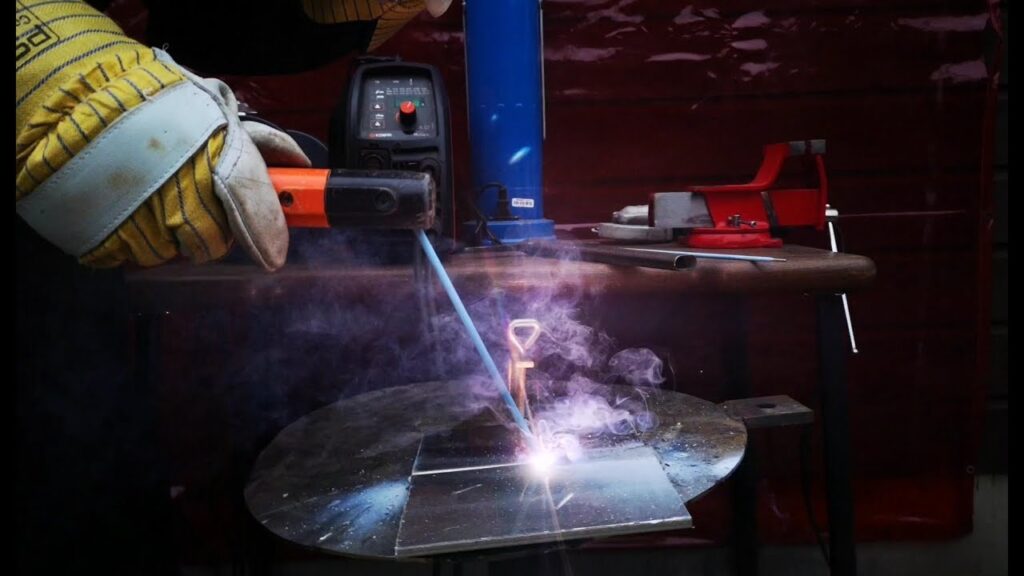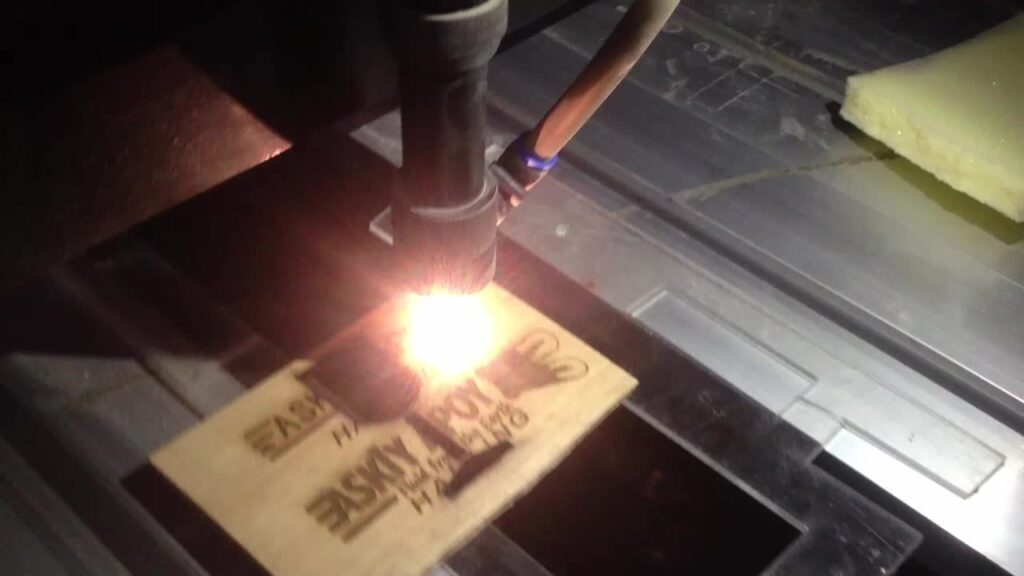Welding practice with covered electrode
Shielded electrode arc welding, also known as MMA welding (Manual Metal Arc Welding), is the oldest and at the same time the most versatile technique of the entire welding industry.
MMA welding process - what is it?
Covered electrode - an electrode consisting of a metal core that is covered with a compressed lagging.
When the end of the electrode is brought into contact with the material to be welded, an electric arc is produced which, by melting the material and the electrode, forms a weld pool of liquid character. Once cooled, the droplets of the molten electrode solidify, producing a permanent weld. The welder then monitors the process by pushing the molten electrode against the workpiece along the weld line in such a way that an arc of constant length is maintained. Under the influence of heat, the remelted electrode sheath gives off gases that protect the liquid metal from adverse atmospheric influences, and it then solidifies, covering the weld joint with a protective slag layer. Once the resulting slag has cooled, it must be removed mechanically.
Types of electrodes:
We distinguish between the following, which are included in the standard DIN EN 499, types of electrodes whose designations are taken from terms derived from the English language:
- A, originating from acid (acidic);
- B, originating from basic (alkaline);
- C, originating from cellulose (cellulose);
- R, originating from rutile (rutile).
The above-mentioned rod electrodes have coverings of different compositions, and their structural layer defines: the welding properties and the melting scale of the electrode. In the German welding industry, rutile electrodes play the biggest role, as they can be used in all three lagging thicknesses (thin, medium and thick).

However, in the case of rod electrodes used in the welding of stainless steels (as defined by the standard DIN EN 1600), only the basic types and rutile electrodes are distinguished. The same is also true for rod electrodes used in the welding of high-strength steels (as defined by the standard DIN EN 1599), where, in addition to rutile electrodes, it also distinguishes between their mixed types, e.g. rutile-base. With regard to rod electrodes used for welding steels with a high hardness index (as defined by the standard DIN EN 757), only types with alkaline lagging are available.
Electrode diameter vs. current - what is the parameter relationship?
| Electrode diameter | Current intensity |
| 2.0 mm | 40-80 A |
| 2.5 mm | 50-100 A |
| 3.2 mm | 90-150 A |
| 4.0 mm | 120-200 A |
| 5.0 mm | 180-270 A |
| 6.0 mm | 220-360 A |
What makes MMA different from other welding techniques?
The main difference of covered-electrode welding compared to other welding techniques is that in the method of Manual Metal Arc Welding The electrode is shortened. Therefore, in order to maintain a constant distance between the weld pool and the electrode, the electrode holder must be continuously moved towards the workpiece with full precision. MIG/MAG and TIG workshops focus on leaving the length of the electrode unchanged, so that the distance between the workpiece and the holder is uninterrupted.

Benefits and drawbacks of covered electrode welding
| Advantages | Disadvantages |
| Welding of relatively thin workpieces (welds from a thickness of 1.5 mm and above) and thick workpieces (multilayer welding of welds above 4 mm is recommended); Variety of types and grades of welded products (cast irons, nickel, alloy steels and non-alloy steels, copper and copper alloys); Welds with good mechanical properties and high quality; Universality of the method, resulting from the availability of any welding position; Possibility of working under difficult field conditions (e.g. under water, in strong winds, at heights); Use of relatively cheap, simple and easily portable equipment; Welding of workpieces with good mechanical properties. The versatility of the method, resulting from the availability of any welding position; The possibility of working under difficult field conditions (e.g. underwater, in strong winds, at height); The use of relatively cheap, simple-to-use and easily portable equipment. | Low process productivity (1 to 5 kg of filler metal per hour); Necessity to change electrodes and remove slag, resulting in an additional reduction in welding productivity; Low welding speed (0.1 to 0.4 m per minute); High sensitivity to moisture (this applies especially to welding with basic electrodes); Significantly high emission rate of gases and fumes emitted during the welding process; Weld quality highly dependent on the extent of the welder's practical skill and seniority; Relatively high cost of welding consumables compared to other methods in the industry. |
Application of the MMA method in everyday use:
- welding of pipelines (mainly on construction sites during installation work);
- welding in areas with difficult module access;
- welding at heights;
- welding of steel structures (mostly in the manufacturing and shipbuilding industries);
- field welding;
- welding in small repair workshops.
Questions and Answers
Is welding with lagging electrodes universal?
The MMA method is the most versatile among welding techniques due to the location and position of welding, the type of structure and the grade of steel to be welded.
How do I select the current for a lagging electrode?
In order to select the electrode current correctly, the thickness of the electrode diameter must be measured, as it is dependent on the ratio of the electric current.
What are the disadvantages of MMA welding?
The main disadvantages of welding with covered electrodes include strong sensitivity to moisture, low welding productivity, high welding gas emissions and the relatively expensive cost of purchasing welding consumables (electrodes).
Where are covered electrodes used?
Welding with covered electrodes is mainly used for installation work on construction sites, welding of steel structures in shipbuilding and manufacturing companies, welding at heights, in adverse field conditions and in places that are difficult to access.

































